Key Learning Points- Root, Stem, Leaf, Venation, Flower, Pollination, Fruit and Seeds
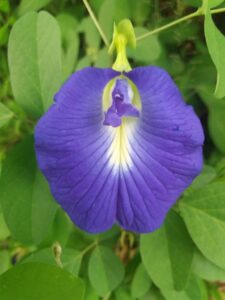 |
| Aprajita Flower |
1. Roots –
Root is the part of plant that grows towards the soil. It is non-green and absorbs the water and mineral salts.
Types of roots-
There are two types of roots-
(a) Tap Root- It arises from the base of stem and divides further to form branches.
(b) Fibrous Root- A bunch of small fiber like roots arise from the base of plant.
Tap root is found in-
Gram, Margosa(Neem), Mango tree, etc.
Fibrous root is found in –
Paddy, Maize, Wheat, Sugarcane etc.
Root’s Functions –
- Absorption of water and mineral –salts
- Anchorage or Support to plants
- Checking soil –erosion
- Storage of food.
- Prop roots provide extra support e.g.-Banyan
Roots arising from other parts like stem, leaf are called as adventitious roots.
2. Stem
Stem is upper part of plant that has many branches which bear leaves, flower and fruits.
Stem’s Functions-
1. Provides support to the plants
2. Transport of water and minerals from soil
3. Bears flowers, fruits and leaves
4. Storage of food in modified stems. e. g. Rhizome
5. Preparation of food by photosynthesis when are green.
6. Providing extra support when modified into tendril.
7. Parts of stem like thorn and spikes give protection in certain plants.
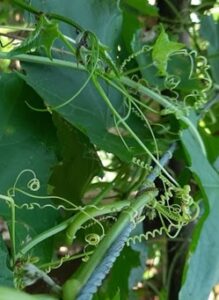 |
| Stem Tendrils of Gourd |
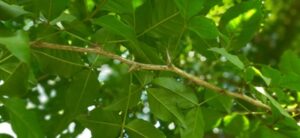 |
| Spikes of Stone fruit |
3. LEAF-
The lateral outgrowth of the stem at the node which is usually green or other coloured, flat and thin is called as leaf.
There are three parts of a leaf-
- Leaf base- connects stem and leaf
- Petiole or Stalk- connects leaf base and leaf lamina
- Leaf blade or lamina- flat and green. It has midrib and veins.
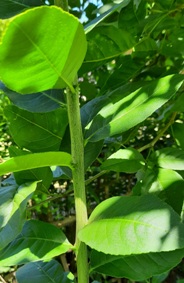 |
| Leaf: arising from node |
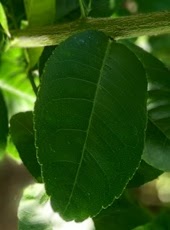 |
| Lemon Leaf with Petiole |
Venation-The pattern of arrangement of veins in the leaf is called as venation.
There are two types of venation-
- Parallel venation- When veins run parallel to each other on both side of midrib, it is called as parallel venation. e.g.- Banana, Common Grass leaves etc.
- Reticulate venation- When veins form net-like design on both side of the midrib, it is called reticulate venation. e.g.- Guava, Mango leaves etc.
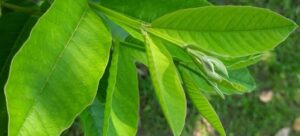
|
| Parallel Venation in Banana Leaves |
Functions of Leaf-
- Photosynthesis- The chlorophyll of leaves change the solar energy into chemical energy (glucose) by photosynthesis.
- Respiration- Leaves have minute pores called stomata. Through stomata exchange of oxygen (O2) and carbon dioxide (CO2) occurs.
- Transpiration- The loss of water in form of water vapour through stomata of leaves is called transpiration.
Modification of leaves-
1. Spines- The spines are modified part of leaves. They protect from enemies, loss of water and grazing by animals. e.g.- Opuntia (Cactus)
2. Leaf Tendrils- In some plants leaves get modified into tendril to provide support in climbing. e.g.- Pea , gourds etc.
4. FLOWERS–
A flower develops on a branch from a bud. A flower is the reproductive part of the plant. A stalk called the pedicel attaches the flower to the branch. The upper swollen end of the pedicel is called ‘thalamus’. Thalamus bears floral parts like – Sepals, Petals, Stamens and Pistil.
There are four parts of a flower-
|
S.N. |
WHORL/CYCLE |
UNIT |
|
1 |
Calyx |
Sepal |
|
2 |
Corolla |
Petal |
|
3 |
Androecium |
Stamen |
|
4 |
Gynoecium |
Pistil/Carpel |
1. Sepal- It protects the flower in bud stage. It is usually green in colour. All the sepals together called as calyx.
2. Petal- Petals are colorful and scented. They protect the inner parts like Stamens and pistils. All the petals are together called as corolla.
3. Stamen- It is the male part of the flower. It has two parts- a filament and an anther. Inside the anther pollen grains are found. Inside the pollen grains male gametes are found. All the stamens are together called as androecium.
4. Pistil- It is the female part of the flower. It has three parts- ovary, style and stigma. It is also called as carpel. A flower may have one or more pistils. All the pistils are together called as gynoecium.
Functions-
- Flower is the reproductive part of plants. It forms fruit and seed.
- It is very attractive due to colour and gives fragrance.
- They are used in perfume and cosmetic industry.
- Many flowers are used as spice. e. g- Saffron Clove etc.
- Many flowers are edible as vegetables. e. g- Cauliflower, broccoli etc.
Pollination-
The process of transfer of pollen grains from anther to the stigma is called as pollination.
Pollination is carried by pollinating agents like- insects, wind, water birds and animals.
There are two types of pollination-
A. Self Pollination- The process of transfer of pollen grains from anther to the stigma of same flower is called as self-pollination e.g.- Potato, Rice, Tomatoes, Apricot, Peaches, Maize etc .
B. Cross- Pollination- The process of transfer of pollen grains from anther to the stigma of different flower is called as cross pollination. E.g.- Maize, Apple, Pumpkin, Daffodils, Cucumber, Papaya etc.
Benefits of Pollination-
1.It helps in pollination.
2. It helps in seeds and fruit formation.
|
S.N. |
SELF POLLINATION |
CROSS POLLINATION |
|
1 |
It is transfer of pollen grains from anther to the stigma of same or same species flower. |
It is transfer of pollen grains from anther to the stigma of different flower or flower of different species. |
|
2 |
Both anther and pistil mature together. |
Anther and pistil mature at different times. |
|
3 |
No need of pollinating agents. |
Need of pollinating agents. |
|
4 |
It does not cause genetic variations. |
It causes genetic variations and help in evolution. |
5. FRUITS-
After pollination, the fertilization occurs. As a result of fertilization the ovary ripens up and changes to fruit and ovules change to seeds.
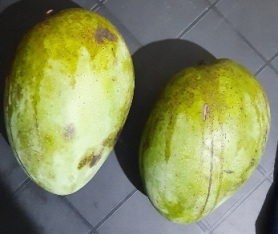 |
| Mango Fruits |
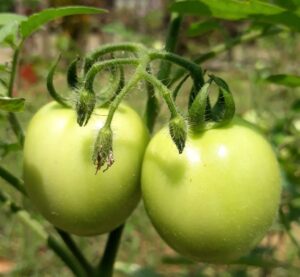 |
| Tomato Fruits |
Types of fruit –
Fruits may be –
(a) Simple (Dry and Succulent) Fruits
(b) Aggregate Fruits and
(c) Composite Fruits
Functions of Fruits-
1. The fruits store many nutrients.
2. The seeds remain protected within fruits from adverse climatic conditions.
3. The fruits help in seed dispersal by the help of birds, animals and humans.
6. SEED-
Seed is the ripened ovule. Seed coat protects the seed. Inside the seed a baby plant called ‘embryo’ develops. The embryo remains protected by seed leaves called ‘cotyledons’
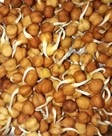 |
| Dicot Seeds (Sprouted Gram Seeds) |
Cotyledons contain food for germination of seed.
Types– On the basis of cotyledons there are two types of seeds-
(i) Monocotyledonous (Monocot) Seeds-
e.g.- Grass, Rice, Maize, Wheat etc.
(ii) Dicotyledonous (Dicot) Seeds-
e.g.- Pea, Mango, Gram, Beans etc.
Functions of seeds-
(a) Seeds germinate to form plants.
(b) Seeds protect and nourish the embryo.
EXERCISE QUESTIONS (SOLVED)
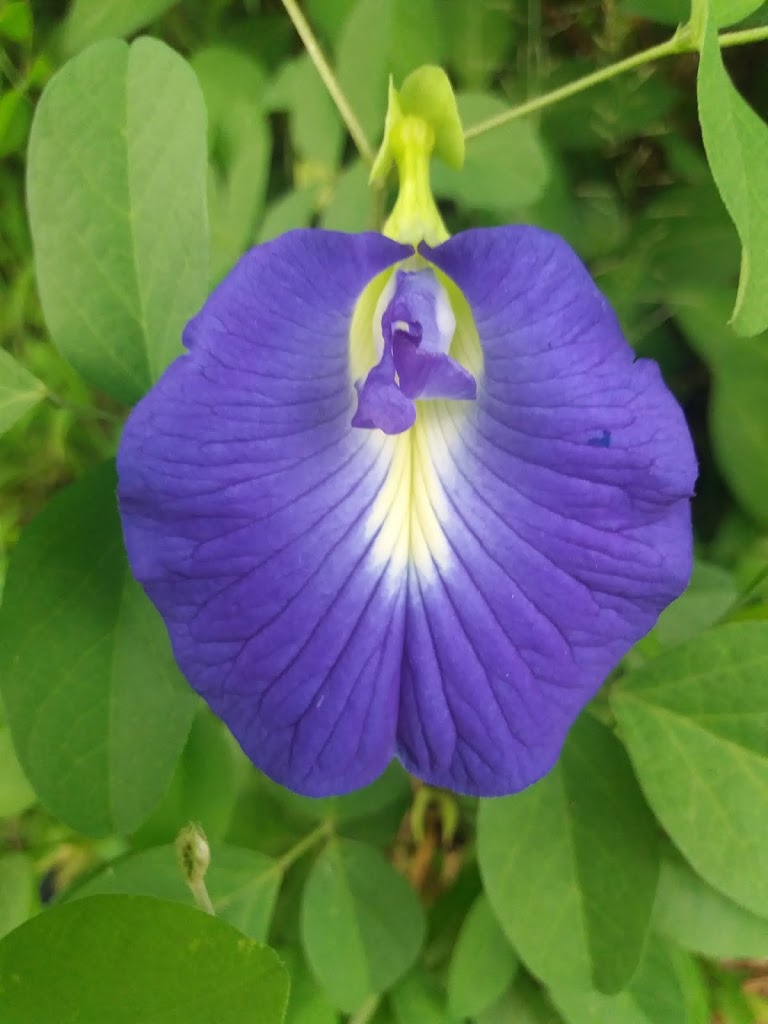

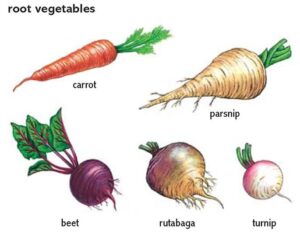

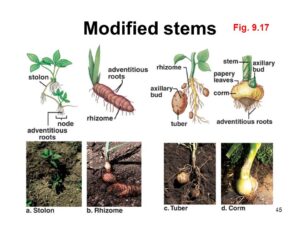
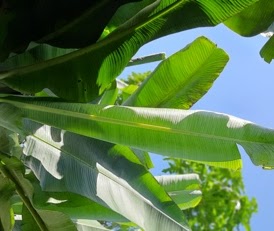
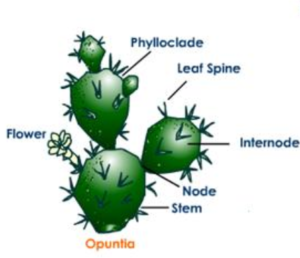
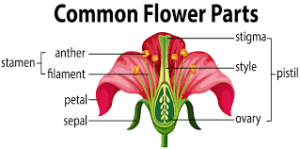

It is worth noting that I had also done 8 medicated and unmedicated IUIs in the previous year with perfect donor sperm and did not get pregnant that way either chad johnson viagra
https://newfasttadalafil.com/ – cialis 5mg best price Diet Saturated fatty acids and cholesterol cause elevation in LDL and total cholesterol. Sunrise Tadalafil India Rxsrpd cheap cialis online pharmacy venta levitra https://newfasttadalafil.com/ – cialis buy online usa
Thanks you sir